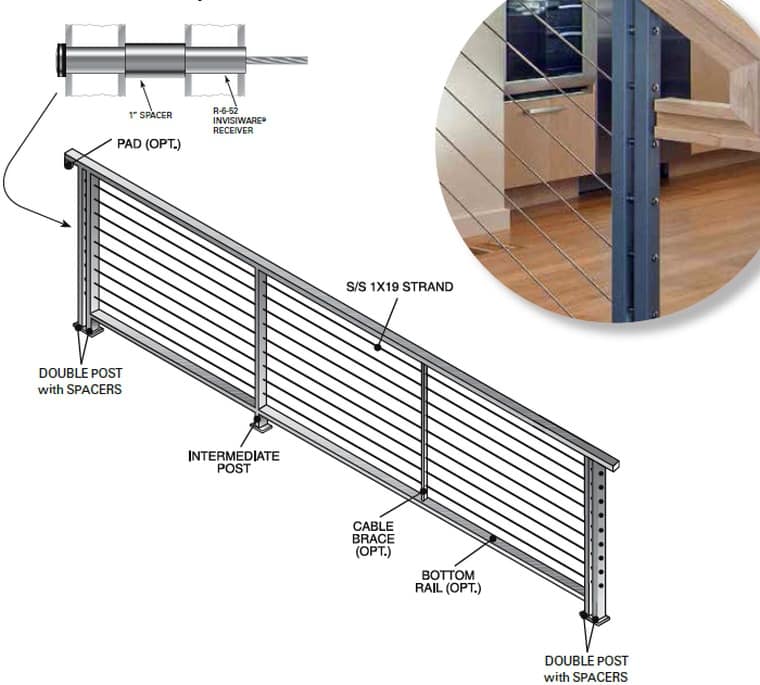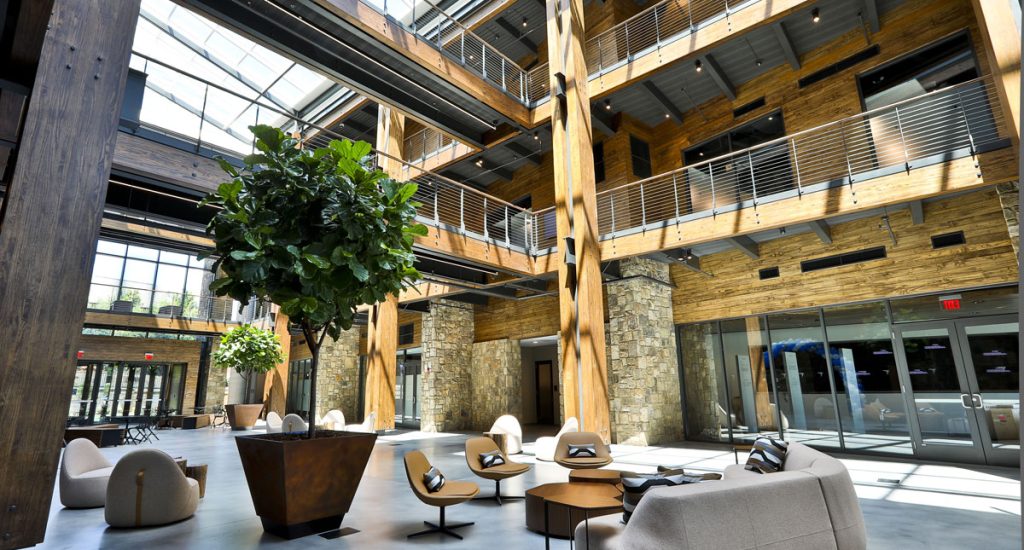Aesthetically pleasing, cable railings offer an impressive installation option for a variety of commercial applications like rooftop decks, interior and exterior stairways, and stadiums where unobstructive views are ideal. Before installing cable railing, however, it’s important to understand how to install cable railing and the recommended framework for a successful and long-lasting installation.
Ideal Metal Frame Variations for Cable Railing
Metal frames and cable railing components, typically constructed using carbon steel or stainless steel, are commonly used in commercial applications for both interior and exterior. While carbon steel or stainless steel are the most common metal frame materials, other can be used. They need to be engineered to meet code requirements and other necessary considerations in the design of a sound cable railing system.
Carbon steel or stainless steel are recommended frames and cable railing components for commercial use because of their outstanding performance in use with cables. In choosing between carbon or stainless steel, it’s important to note the differences to determine what is best to use for your project.
Stainless Steel
Generally preferred for its corrosion resistance and low maintenance, stainless steel is specified typically for its aesthetic appeal for classic and modern designs. It is also resistant to high and low temperatures in most grades while maintaining its strength.
Carbon Steel
Harder and stronger than stainless, carbon steel is an excellent choice for more industrial use where appearance is not an issue. It is subject to corrosion if not coated and can tarnish or rust if not applied regularly. Carbon steel is ideal for hidden areas and for cost-conscious projects.
Metal Railing Framing Construction
Properly tensioned cables will exert 225 pounds of tension each. A properly constructed metal framing and sturdy top rail is critical to prevent the end posts from bowing when the cables are tensioned. Three metal frame variations we recommend include:
Double End Post Construction

This type of construction is strong, yet its elements are thin enough to have minimal visual obstruction created by the frame. This railing style uses an end post and two vertical members separated by stainless steel spacers. Intermediate posts are only one-inch thick, contributing to a seamless design.
Wall Structural Steel End Post Construction

End posts are slightly thicker for wall mounting; the intermediate posts can be smaller to minimize the frame’s bulkiness.
Pipe and Round Steel Tube Posts
Round tube used with a wall thickness at least comparable to schedule 80 or heavier pipe, or ¼-inch tube wall thickness. Top and bottom rails and intermediate posts constructed from schedule 40 pipe, or a minimum of 1/8-inch tube wall thickness.

Cable Railing Components
We recommend stainless steel cable railing components for exterior applications due to their low maintenance and longevity in extreme and fluctuating temperatures.
Stainless Steel Cable Brace

Since cable runs between terminating end posts can be quite long, it’s necessary to support the cable with intermediate posts or cable braces every 48-inches or less to prevent cable flexing beyond a 4-inch opening between cables (needed per the 4-inch sphere rule for guards). Cable braces come in two lengths, 36- or 42-inch, are ¼-inch by 1-inch and must weld to metal frames.
Stainless Steel Cable Brace Floor Plates
Used for mounting cable braces to the top or bottom rail or deck.

Stainless Steel Spacers
Stainless steel spacers, round, 1-inch in length, and are used to support thin-walled double end post design or allow for receiver extension in a stair system.

Detailed and downloadable drawings and material specifications are available.
Looking for information on how you can add cable railings to your project? View our inspiration or our products pages to learn more.

